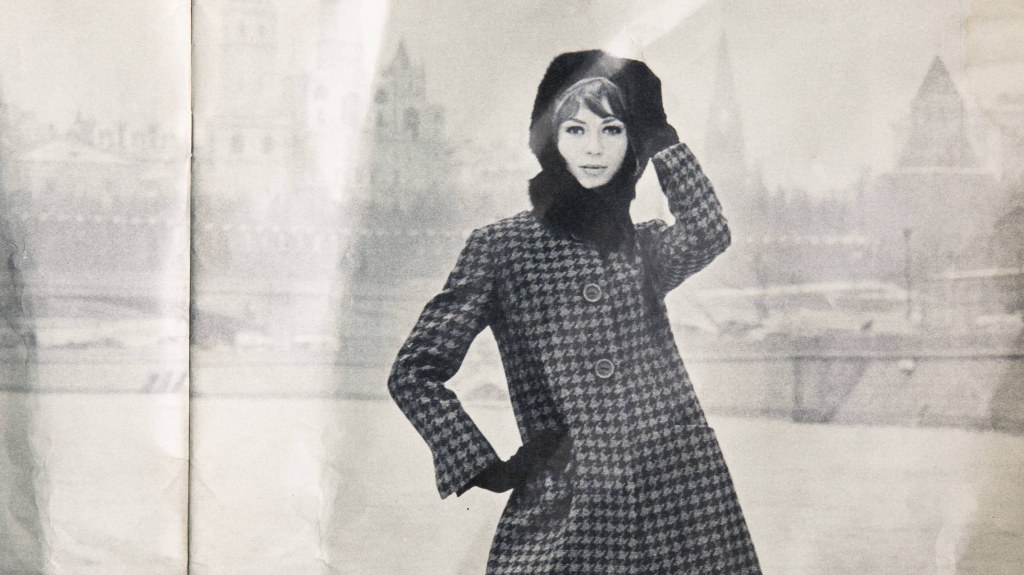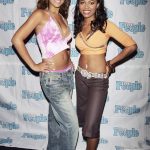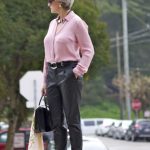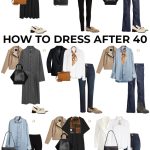Cold War Fashion Trends: Unveiling The Style Battle Of The Era!
Fashion Trends During the Cold War
Introduction
Dear Readers,
1 Picture Gallery: Cold War Fashion Trends: Unveiling The Style Battle Of The Era!

Welcome to our discussion on fashion trends during the Cold War. In this article, we will explore the fashion choices and styles that emerged during this period of political tension between the United States and the Soviet Union. The Cold War, which lasted from the late 1940s to the early 1990s, influenced various aspects of society, including the fashion industry.

Image Source: amazonaws.com
Throughout this article, we will delve into the what, who, when, where, why, and how of fashion trends during the Cold War. We will also discuss the advantages and disadvantages of these trends, as well as address some frequently asked questions. By the end, we hope to provide you with a comprehensive understanding of the fashion landscape during this significant era.
What Were the Fashion Trends During the Cold War?
During the Cold War, fashion trends reflected the societal changes and tensions of the era. Clothing styles varied greatly between the United States and the Soviet Union, as each side sought to promote its own cultural identity. In the West, the fashion industry embraced modernity and freedom, while the East favored more conservative and utilitarian attire. Despite these differences, both sides experienced shifts in fashion trends throughout the Cold War.
👗 One notable trend during this period was the rise of the New Look in the 1950s. Introduced by French designer Christian Dior, this style featured full skirts, nipped-in waists, and emphasized femininity. The New Look represented a return to elegance and luxury after the austerity of World War II.
🧥 Another trend that emerged during the Cold War was the influence of military fashion. This was particularly evident in the United States, where military-inspired garments such as bomber jackets and cargo pants became popular. The utilitarian aspects of military clothing appealed to the sense of practicality and functionality that characterized the era.
👠 The 1960s brought about a significant shift in fashion as the youth culture began to assert itself. The counterculture movement and the rise of the hippie subculture influenced fashion trends with its embrace of bohemian styles. Flowy maxi dresses, bell-bottom pants, and tie-dye prints became popular among young people during this time.
🎩 In the Eastern Bloc, under Soviet influence, fashion trends were more restrained and focused on modesty and uniformity. The Soviet government promoted the idea of the Soviet Man or Soviet Woman who dressed in practical and simple clothing. Uniform-like attire, such as boxy suits and dresses, dominated the fashion landscape.
👗🧥 Despite these differences, there were also fashion trends that transcended the divide between East and West. For example, the 1980s witnessed the popularity of power dressing. Both American and Soviet women embraced bold, shoulder-padded blazers and oversized accessories as a symbol of empowerment.
👠🎩 Additionally, the Cold War saw the introduction of synthetic fabrics such as nylon and polyester, which offered durability and affordability. These fabrics revolutionized the fashion industry and became widely utilized in both Western and Eastern fashion.
👗🧥👠🎩 Fashion trends during the Cold War were not only influenced by politics but also by advancements in technology, changing social norms, and the desire for self-expression.
Who Influenced Fashion Trends During the Cold War?
The fashion trends during the Cold War were influenced by various factors and individuals. Fashion designers played a crucial role in shaping the styles and aesthetics of the era.
👗 Christian Dior, a prominent French designer, revolutionized fashion with his New Look. His glamorous and feminine designs set the tone for fashion in the 1950s and beyond.
🧥 Coco Chanel, known for her timeless and practical designs, also had an impact on fashion during the Cold War. Her iconic creations, such as the little black dress and tailored suits, were embraced by women on both sides of the East-West divide.
👠 In the 1960s, Mary Quant, a British designer, popularized the mini skirt, which became a symbol of the youth culture and women’s liberation movement. Her daring and youthful designs challenged traditional fashion norms.
🎩 On the Eastern side, Soviet fashion designers such as Slava Zaitsev and Valentin Yudashkin created clothing that adhered to the Soviet aesthetic of practicality and uniformity. Their designs catered to the needs of the Soviet population while incorporating elements of international fashion trends.
👗🧥👠🎩 Additionally, celebrities and cultural icons also influenced fashion trends during the Cold War. Figures like Audrey Hepburn, Marilyn Monroe, and Jackie Kennedy captivated the public with their impeccable style and became fashion icons of the era.
👗🧥👠🎩 The influence of fashion magazines cannot be understated either. Publications such as Vogue, Harper’s Bazaar, and Cosmopolitan showcased the latest fashion trends and provided style inspiration to people on both sides of the Iron Curtain.
When Did Fashion Trends During the Cold War Emerge?
Fashion trends during the Cold War emerged from the late 1940s and continued to evolve until the early 1990s. The period following World War II marked a significant shift in fashion as societies recovered from the effects of the war and sought to define their identities.
👗 The 1950s saw the emergence of the New Look, which revolutionized fashion with its emphasis on femininity and elegance.
🧥 The 1960s witnessed the rise of the counterculture movement and the influence of bohemian styles, challenging traditional fashion norms.
👠 In the 1970s, fashion trends reflected the changing social attitudes and the rise of disco culture. Bold prints, platform shoes, and wide-leg pants were popular during this time.
🎩 In the 1980s, power dressing took center stage, symbolizing women’s empowerment and ambition.
👗🧥👠🎩 Fashion trends during the Cold War were not static but evolved in response to societal changes, political events, and advancements in technology.
Where Did Fashion Trends During the Cold War Originate?
Fashion trends during the Cold War originated from various locations and cultures. The Western world, particularly the United States and Western Europe, played a significant role in shaping global fashion during this period.
👗 The New Look introduced by Christian Dior originated in France and quickly gained international popularity.
🧥 American fashion, influenced by Hollywood and the youth culture, brought about trends such as military-inspired clothing and power dressing.
👠 British fashion, with designers like Mary Quant and Vivienne Westwood, pushed boundaries and brought new perspectives to fashion during the Cold War.
🎩 In the Eastern Bloc, Soviet fashion trends originated from the Soviet Union and were largely influenced by the government’s emphasis on practicality and uniformity.
👗🧥👠🎩 Additionally, the fashion industry during the Cold War was not limited to a single location but was shaped by the global exchange of ideas and styles. Fashion capitals like Paris, New York, London, and Moscow all contributed to the evolving fashion landscape.
Why Did Fashion Trends During the Cold War Matter?
Fashion trends during the Cold War mattered for several reasons. Firstly, they served as a means of self-expression and individuality in a period marked by political tensions and conformity.
👗 Fashion allowed people to assert their personal style and challenge societal norms, particularly during the counterculture movement of the 1960s.
🧥 Fashion also played a role in shaping cultural identities and promoting national pride. Both the United States and the Soviet Union used fashion to convey their respective values and ideals.
👠 Fashion trends during the Cold War also had economic implications. The fashion industry became a significant contributor to the global economy, with new trends driving consumer demand and creating jobs.
🎩 Furthermore, fashion during this period reflected the social and technological advancements of the time. The introduction of synthetic fabrics and innovative manufacturing techniques revolutionized the industry and made fashion more accessible to a wider audience.
👗🧥👠🎩 Overall, fashion trends during the Cold War were not merely superficial expressions but represented the changing values, aspirations, and aspirations of a society.
How Did Fashion Trends During the Cold War Impact Society?
Fashion trends during the Cold War had a significant impact on society, influencing not only personal style but also cultural norms and perceptions.
👗 Fashion became a form of cultural diplomacy, with designers and fashion shows acting as showcases for showcasing a country’s artistic and creative prowess.
🧥 The rise of power dressing in the 1980s, for example, challenged traditional gender roles and empowered women in the workforce.
👠 Fashion also played a role in bridging the divide between East and West. Despite political tensions, fashion trends often transcended borders and served as a common ground for cultural exchange.
🎩 The fashion industry during the Cold War created employment opportunities and contributed to economic growth, particularly in countries like France, Italy, and the United States.
👗🧥👠🎩 Additionally, fashion trends during this period reflected the changing attitudes towards consumerism and the desire for self-expression. Fashion became a means of asserting one’s individuality and personality.
👗🧥👠🎩 Overall, fashion trends during the Cold War were not only a reflection of society but also actively influenced and shaped it.
Advantages and Disadvantages of Fashion Trends During the Cold War
Fashion trends during the Cold War had both advantages and disadvantages. Let’s explore them in detail.
Advantages
1. Self-Expression: Fashion trends allowed individuals to express their personality and unique sense of style.
2. Cultural Identity: Fashion showcased cultural identities and national pride, allowing people to connect with their heritage.
3. Economic Growth: The fashion industry contributed to economic growth by generating employment opportunities and driving consumer demand.
4. Empowerment: Certain fashion trends, like power dressing, empowered women and challenged traditional gender roles.
5. Cultural Exchange: Fashion trends often transcended political boundaries, fostering cultural exchange and understanding.
Disadvantages
1. Conformity: Fashion trends could lead to conformity and social pressure to adhere to certain styles or norms.
2. Materialism: The emphasis on fashion and consumerism during the Cold War perpetuated materialistic values.
3. Exploitation: The fashion industry has been criticized for unethical labor practices and environmental concerns.
4. Exclusion: Certain fashion trends may have excluded marginalized communities or reinforced social hierarchies.
5. Environmental Impact: The production and disposal of clothing contribute to environmental degradation.
Frequently Asked Questions (FAQ)
1. Were fashion trends during the Cold War influenced by political events?
Yes, political events and tensions during the Cold War played a role in shaping fashion trends. Styles were often used to convey national identity and cultural values.
2. Did fashion trends differ significantly between the East and the West during the Cold War?
Yes, fashion trends in the East and West during the Cold War differed significantly. The West embraced modernity and freedom, while the East favored more conservative and utilitarian styles.
3. How did fashion magazines contribute to fashion trends during the Cold War?
Fashion magazines, such as Vogue and Harper’s Bazaar, showcased the latest trends and provided style inspiration to people on both sides of the Iron Curtain. They played a significant role in disseminating fashion information.
4. Did fashion trends during the Cold War impact everyday people or only the elite?
Fashion trends during the Cold War impacted both the elite and everyday people. While high fashion was often associated with the elite, trends trickled down to mass-market clothing and influenced the choices of the general population.
5. How did fashion trends during the Cold War reflect societal changes?
Fashion trends during the Cold War reflected societal changes by challenging traditional norms, empowering marginalized groups, and representing shifting cultural attitudes.
Conclusion
After exploring fashion trends during the Cold War, it is clear that fashion played a significant role in this era, reflecting political tensions, societal shifts, and cultural exchanges. From the iconic New Look to the influence of military fashion and the rise of power dressing, fashion trends during this period continue to influence contemporary styles. While there were advantages and disadvantages to these trends, fashion served as a means of self-expression, empowerment, and cultural identity. Let us embrace the lessons learned from fashion during the Cold War and appreciate the role it plays in our lives today.
Final Remarks
Dear Readers,
Thank you for joining us on this journey through fashion trends during the Cold War. It is important to note that this article provides a general overview and may not capture the entirety of this complex and expansive topic. Fashion is a continually evolving form of self-expression, and its impact goes beyond political boundaries and historical periods. As we navigate the world of fashion, let us remain conscious of the environmental and social implications of our choices. Remember, fashion
This post topic: Fashion Trends



